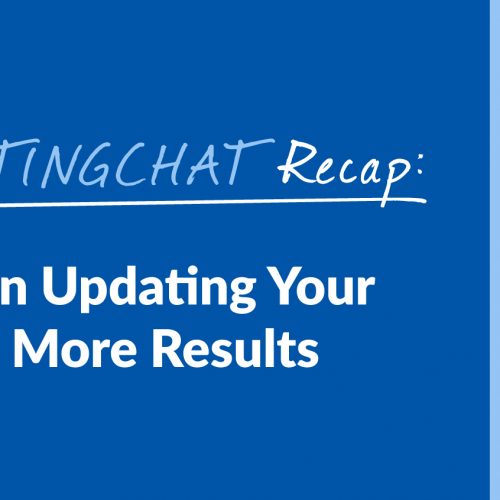How to Do a Content Audit to Maximize Your SEO
You regularly visit the doctor for checkups, even if you aren’t sick. You go to the doctor to PREVENT you from getting sick. By keeping up with these visits, the doctor can give you a status report on your health and catch any issues while they’re still minor and easy to solve. Without those checkups, you might not receive medical care until an issue has begun wreaking complete havoc on your system and causing irreparable damage to your body. Your website also needs regular checkups, which marketers call content audits. They are a crucial website health checkup that gives you the status of your website’s performance while also alerting you to any issues before they cause more significant problems. Without a content audit, you’ll miss out on vital health updates and won’t know there are issues until your site shows severe damage, such as a drop in traffic or conversions. It also alerts you to what’s performing well and new opportunities to continue growing your site. Let’s unlock the secrets of the content audit through this guide so you can begin giving your site its much-needed regular checkups. What Is a Website Content Audit? A content audit is a complete check of your content. Content includes all the assets on your website, such as blog posts, landing pages, and web pages. Leave no page overlooked. Yes, that does sound like it takes time. That’s why most people perform these at least once annually. About 61% of marketers perform content audits two or more times in a year. But, it’s not a task you want to skim over as you may miss crucial signs of issues or new opportunites. What exactly are you looking for? Here are a few signs of issues: Errors Outdated content Repetitive content Poor content As you perform a content audit, you will decide what needs fixing, updating, or deletion. Ultimately, you’ll create a more positive user experience as readers encounter fewer errors and confusing or outdated content. The regular updates also keep your content relevant and running smoothly, boosting your search engine ranking. Why a Website Content Audit Is a Must Could you run a website without a content audit? Technically speaking, yes, you could. But that would be like living in a house without ever cleaning it. The house might remain standing, but the dust buildup and grime will scare away visitors and even cost you your health. A content audit keeps your website looking updated, active, and valuable to your target audience so they feel welcome and eager to explore further. Here are the top benefits of conducting regular content audits: Performance Insights: You’ll gain insights into your content performance. If you want a successful website that attracts monthly traffic, you need to create content with high-performance rates. Reviewing your analytics during your audit builds a clear picture of your topics and formats that generate the most traffic, engagement, and conversions. Audience Understanding: Knowing your audience drives your content, and your final goal is to connect and convert that audience. You want to understand their interests, pain points, motivating factors, and life changes. Understanding what content your audience engages with gives you glimpses into those details and what they might find most valuable. Improved Ranking: When you refresh and update content, it becomes more appealing to both your audience and Google. High-quality, valuable content ranks higher in search results, boosting organic traffic. These benefits offset the time and effort you invest in content audits. You’ll see better traffic, higher search engine ranking, and improved visitor impressions. One SEMrush report found that about half of those who regularly updated their content saw higher engagement and ranking. How to Do a Content Audit to Maximize Your SEO Are you excited to start enjoying those benefits on your website? Dive into the five steps of performing an SEO content audit to get you started. Because of the time a content audit takes, we highly recommend scheduling it in your calendar so you have enough time blocked out to dive into your content performance and make the most of your findings. If you’re a small site, a day may be enough. Larger sites will require several days to fully analyze. 1. Define Your Goals Before you invest a single dime or hour in your content audit, you need to answer the why behind the audit. Your goals will provide context to your audit and focus on what you hope to accomplish. Without goals, your audit would easily take several weeks rather than days because of reading through hundreds of articles and pages. You don’t need to read through everything. Just the data that’s most relevant to your goal. Some ideas to inspire you include: Improving your SEO Fixing technical errors Identifying missing content Understanding website visitors Boosting engagement Increasing conversions Once you have set one or more goals, you will also know what metrics to focus on so you don’t drown in all the data you’ll uncover during your audit. 2. Take Inventory of Your Site’s Content It’s time to roll up your sleeves and begin the hard work. To truly understand your content and its performance, you’ll want to inventory what content currently lives on your website. It’s the only way to ensure you review every page for quality, value, and optimization. The longer you have had a site with regularly published content, the longer this step will take. We use spreadsheets to keep your content organized. You can detail the key points you want to track on the sheet and easily share it with relevant parties. Start by adding these columns to your spreadsheet: URL Date audited Title Description Content type Keywords Alt tags Last updated Internal links Some other columns you might add, depending on your goal, include: Shares Comments Word count Content goal While you can type this information manually, we highly recommend exporting as much as possible. If you work with HubSpot, it can export much of your website content for you, … Read more




